End-to-end Autonomous Driving Research: status quo of End-to-end (E2E) autonomous driving
1. Status quo of end-to-end solutions in China
An end-to-end autonomous driving system refers to direct mapping from sensor data inputs (camera images, LiDAR, etc.) to control command outputs (steering, acceleration/deceleration, etc.). It first appeared in the ALVINN project in 1988. It uses cameras and laser rangefinders as input and a simple neural network to generate steering as output.
In early 2024, Tesla rolled out FSD V12.3, featuring an amazing intelligent driving level. The end-to-end autonomous driving solution garners widespread attention from OEMs and autonomous driving solution companies in China.?
Compared with conventional multi-module solutions, the end-to-end autonomous driving solution integrates perception, prediction and planning into a single model, simplifying the solution structure. It can simulate human drivers making driving decisions directly according to visual inputs, effectively cope with long tail scenarios of modular solutions and improve the training efficiency and performance of models.
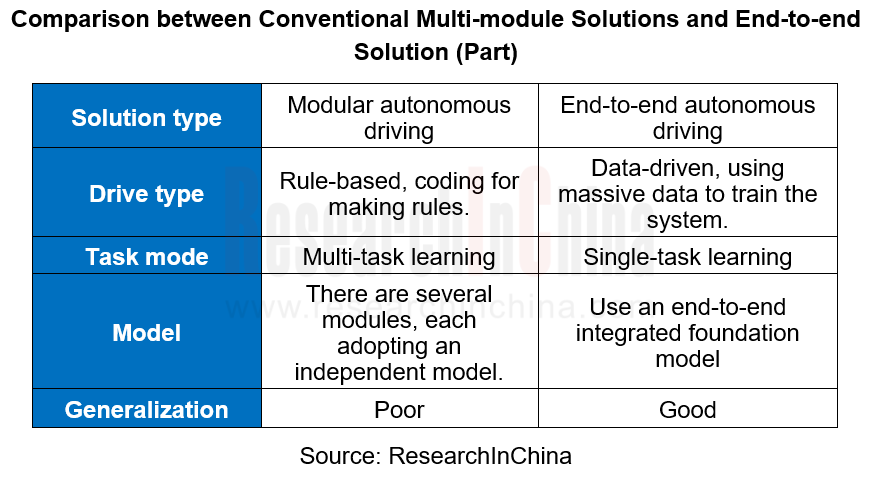
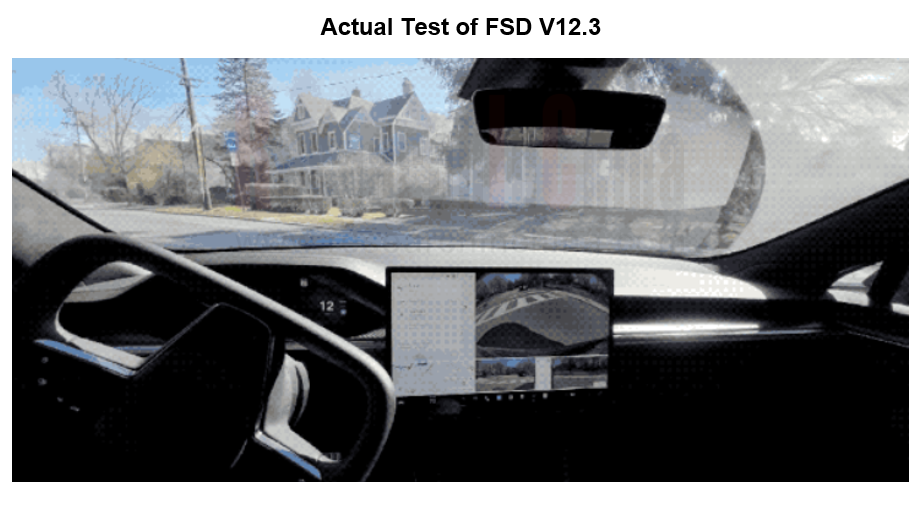
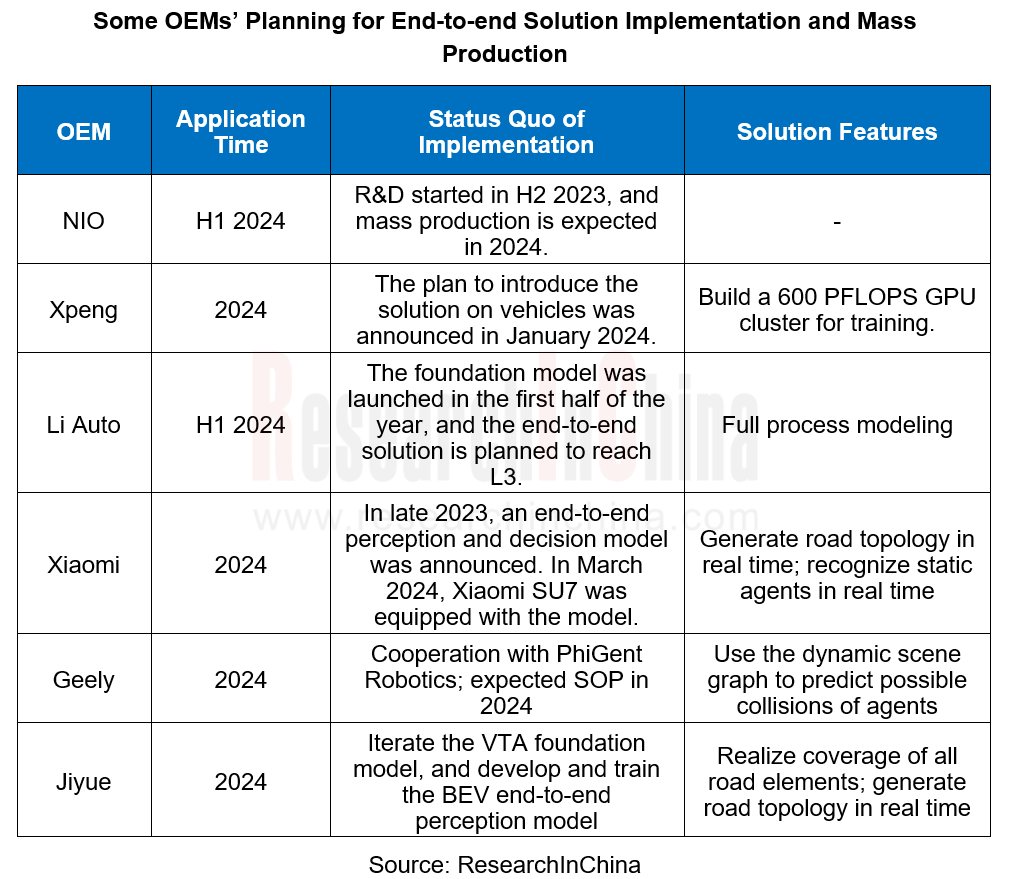
Li Auto's end-to-end solution
Li Auto believes that a complete end-to-end model should cover the whole process of perception, tracking, prediction, decision and planning, and it is the optimal solution to achieve L3 autonomous driving. In 2023, Li Auto pushed AD Max3.0, with overall framework reflecting the end-to-end concept but still a gap with a complete end-to-end solution. In 2024, Li Auto is expected to promote the system to become a complete end-to-end solution.?
Li Auto's autonomous driving framework is shown below, consisting of two systems:
Fast system: System 1, Li Auto’s existing end-to-end solution which is directly executed after perceiving the surroundings.
Slow system: System 2, a multimodal large language model that logically thinks and explores unknown environments to solve problems in unknown L4 scenarios.
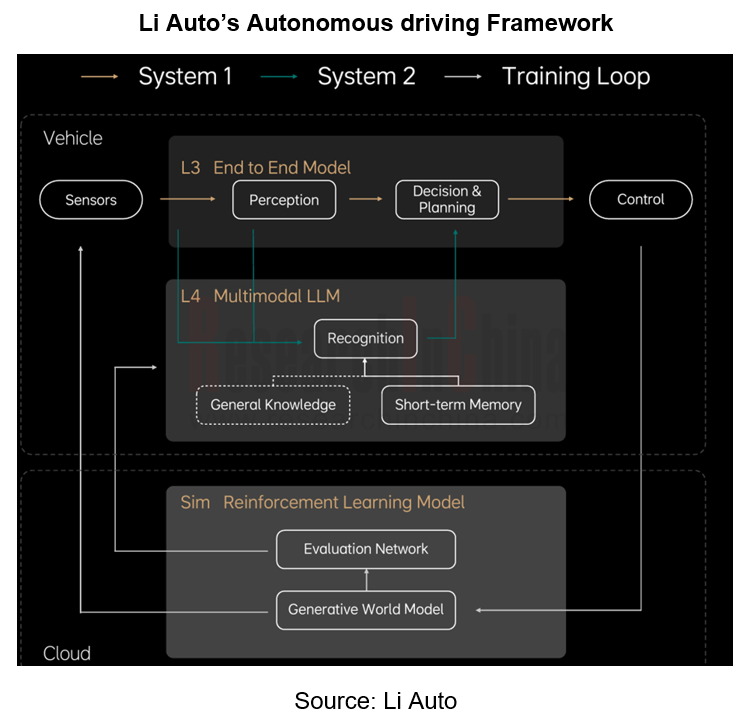
In the process of promoting the end-to-end solution, Li Auto plans to unify the planning/forecast model and the perception model, and accomplish the end-to-end Temporal Planner on the original basis to integrate parking with driving.
2. Data becomes the key to the implementation of end-to-end solutions.
The implementation of an end-to-end solution requires processes covering R&D team building, hardware facilities, data collection and processing, algorithm training and strategy customization, verification and evaluation, promotion and mass production. Some of the sore points in scenarios are as shown in the table:
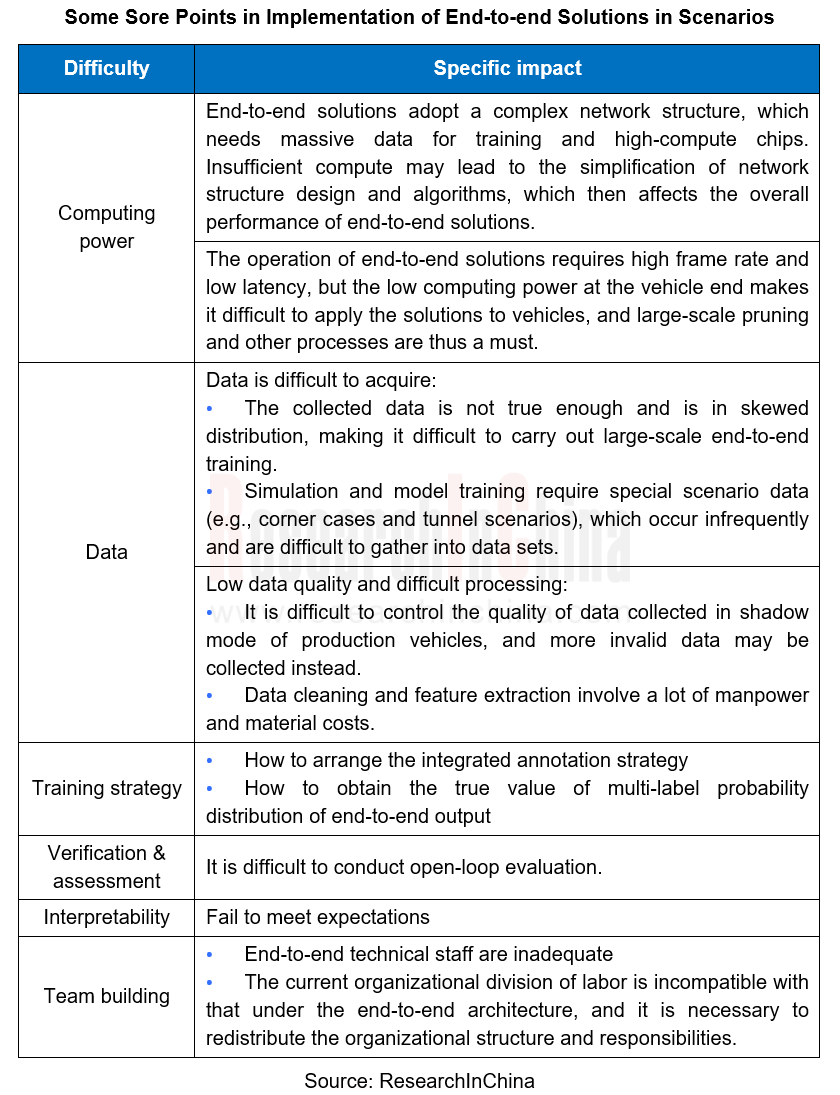
The integrated training in end-to-end autonomous driving solutions requires massive data, so one of the difficulties it faces lies in data collection and processing.
First of all, it needs a long time and may channels to collect data, including driving data and scenario data such as roads, weather and traffic conditions. In actual driving, the data within the driver's front view is relatively easy to collect, but the surrounding information is hard to say.
During data processing, it is necessary to design data extraction dimensions, extract effective features from massive video clips, make statistics of data distribution, etc. to support large-scale data training.
DeepRoute
As of March 2024, DeepRoute.ai's end-to-end autonomous driving solution has been designated by Great Wall Motor and involved in the cooperation with NVIDIA. It is expected to adapt to NVIDIA Thor in 2025. In the planning of DeepRoute.ai, the transition from the conventional solution to the "end-to-end" autonomous driving solution will go through sensor pre-fusion, HD map removal, and integration of perception, decision and control.
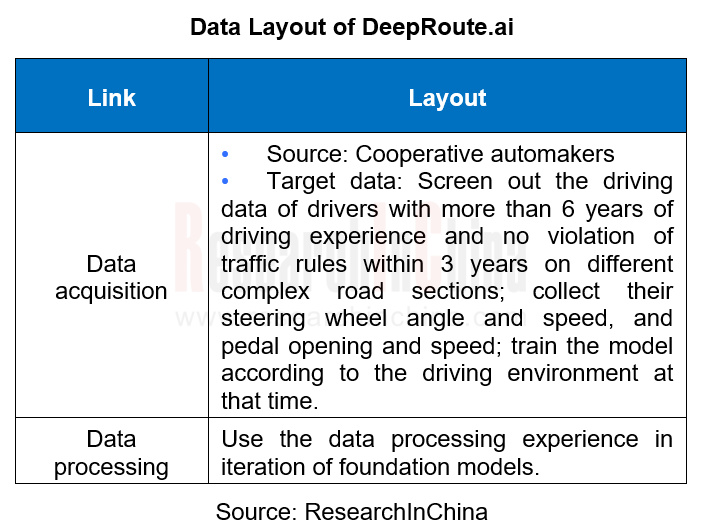
GigaStudio
DriveDreamer, an autonomous driving model of GigaStudio, is capable of scenario generation, data generation, driving action prediction and so forth. In the scenario/data generation, it has two steps:
When involving single-frame structural conditions, guide DriveDreamer to generate driving scenario images, so that it can understand structural traffic constraints easily.
Extend its understanding to video generation. Using continuous traffic structure conditions, DriveDreamer outputs driving scene videos to further enhance its understanding of motion transformation.
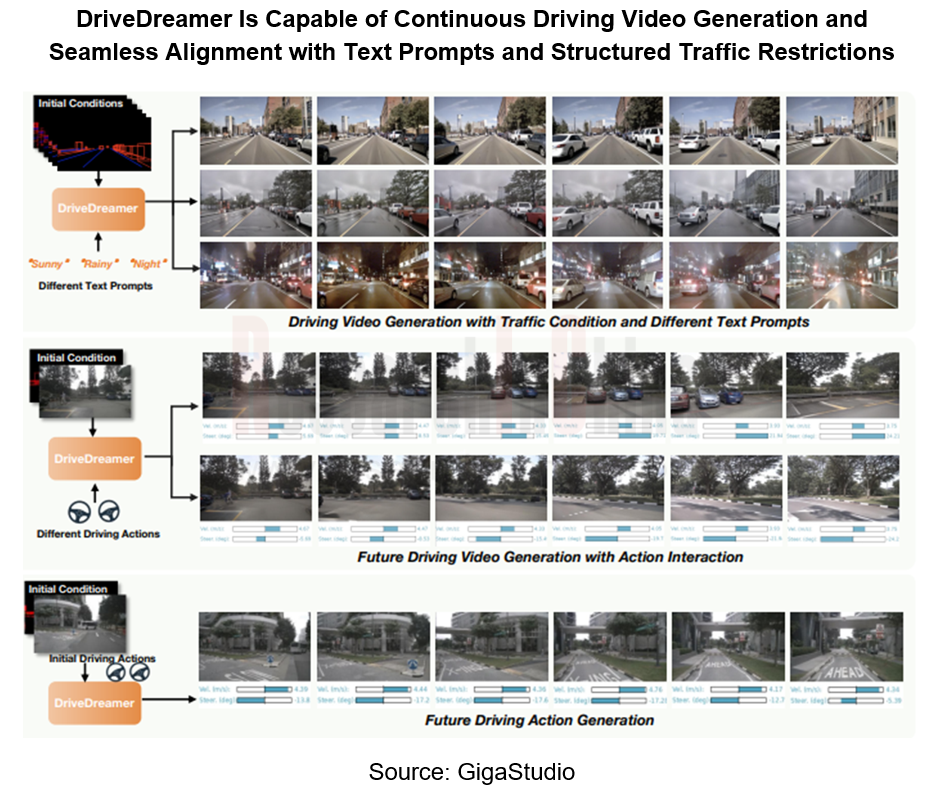
3. End-to-end solutions accelerate the application of embodied robots.
In addition to autonomous vehicles, embodied robots are another mainstream scenario of end-to-end solutions. From end-to-end autonomous driving to robots, it is necessary to build a more universal world model to adapt to more complex and diverse real application scenarios. The development framework of mainstream AGI (General Artificial Intelligence) is divided into two stages:
Stage 1: the understanding and generation of basic foundation models are unified, and further combined with embodied artificial intelligence (embodied AI) to form a unified world model;
Stage 2: capabilities of world model + complex task planning and control, and abstract concept induction gradually evolve into the era of the interactive AGI 1.0.
In the landing process of the world model, the construction of an end-to-end VLA (Vision-Language-Action) autonomous system has become a crucial link. VLA, as the basic foundation model of embodied AI, can seamlessly link 3D perception, reasoning and action to form a generative world model, which is built on the 3D-based large language model (LLM) and introduces a set of interactive markers to interact with the environment.
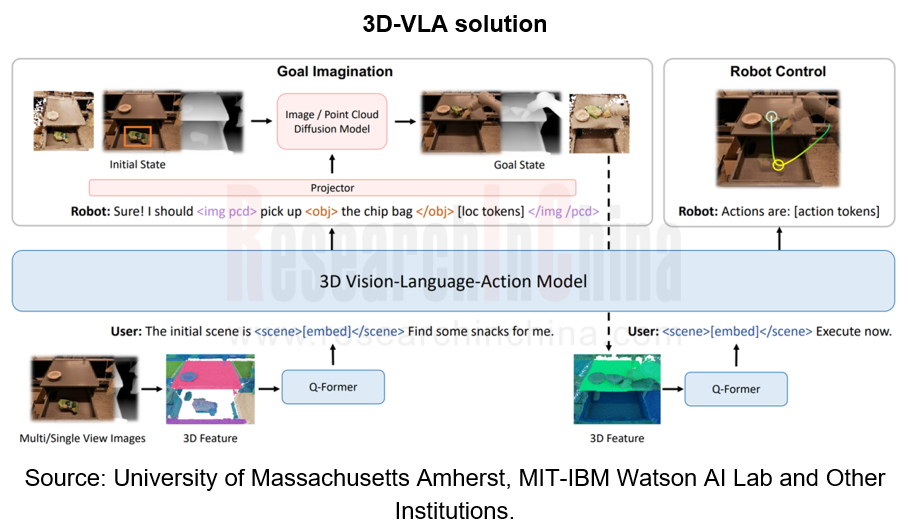
As of April 2024, some manufacturers of humanoid robots adopting end-to-end solutions are as follows:
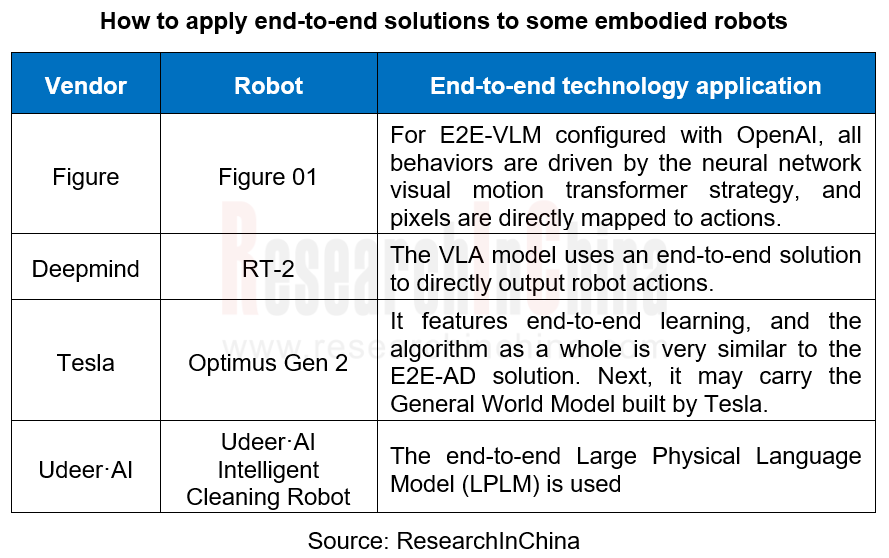
For example, Udeer·AI's Large Physical Language Model (LPLM) is an end-to-end embodied AI solution that uses a self-labeling mechanism to improve the learning efficiency and quality of the model from unlabeled data, thereby deepening the understanding of the world and enhancing the robot's generalization capabilities and environmental adaptability in cross-modal, cross-scene, and cross-industry scenarios.
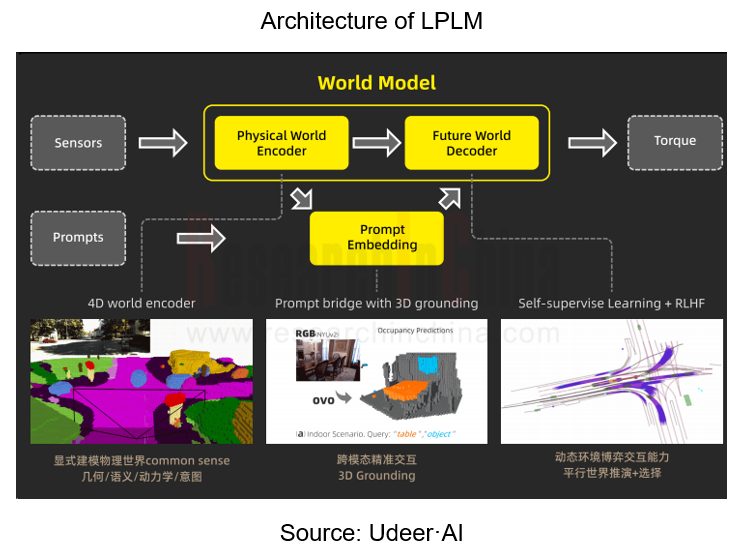
LPLM abstracts the physical world and ensures that this kind of information is aligned with the abstract level of features in LLM. It explicitly models each entity in the physical world as a token, and encodes geometric, semantic, kinematic and intentional information.
In addition, LPLM adds 3D grounding to the encoding of natural language instructions, improving the accuracy of natural language to some extent. Its decoder can learn by constantly predicting the future, thus strengthening the ability of the model to learn from massive unlabeled data.
Autonomous Driving Domain Controller and Central Computing Unit (CCU) Industry Report, 2025
Research on Autonomous Driving Domain Controllers: Monthly Penetration Rate Exceeded 30% for the First Time, and 700T+ Ultrahigh-compute Domain Controller Products Are Rapidly Installed in Vehicles
L...
China Automotive Lighting and Ambient Lighting System Research Report, 2025
Automotive Lighting System Research: In 2025H1, Autonomous Driving System (ADS) Marker Lamps Saw an 11-Fold Year-on-Year Growth and the Installation Rate of Automotive LED Lighting Approached 90...
Ecological Domain and Automotive Hardware Expansion Research Report, 2025
ResearchInChina has released the Ecological Domain and Automotive Hardware Expansion Research Report, 2025, which delves into the application of various automotive extended hardware, supplier ecologic...
Automotive Seating Innovation Technology Trend Research Report, 2025
Automotive Seating Research: With Popularization of Comfort Functions, How to Properly "Stack Functions" for Seating?
This report studies the status quo of seating technologies and functions in aspe...
Research Report on Chinese Suppliers’ Overseas Layout of Intelligent Driving, 2025
Research on Overseas Layout of Intelligent Driving: There Are Multiple Challenges in Overseas Layout, and Light-Asset Cooperation with Foreign Suppliers Emerges as the Optimal Solution at Present
20...
High-Voltage Power Supply in New Energy Vehicle (BMS, BDU, Relay, Integrated Battery Box) Research Report, 2025
The high-voltage power supply system is a core component of new energy vehicles. The battery pack serves as the central energy source, with the capacity of power battery affecting the vehicle's range,...
Automotive Radio Frequency System-on-Chip (RF SoC) and Module Research Report, 2025
Automotive RF SoC Research: The Pace of Introducing "Nerve Endings" such as UWB, NTN Satellite Communication, NearLink, and WIFI into Intelligent Vehicles Quickens
RF SoC (Radio Frequency Syst...
Automotive Power Management ICs and Signal Chain Chips Industry Research Report, 2025
Analog chips are used to process continuous analog signals from the natural world, such as light, sound, electricity/magnetism, position/speed/acceleration, and temperature. They are mainly composed o...
Global and China Electronic Rearview Mirror Industry Report, 2025
Based on the installation location, electronic rearview mirrors can be divided into electronic interior rearview mirrors (i.e., streaming media rearview mirrors) and electronic exterior rearview mirro...
Intelligent Cockpit Tier 1 Supplier Research Report, 2025 (Chinese Companies)
Intelligent Cockpit Tier1 Suppliers Research: Emerging AI Cockpit Products Fuel Layout of Full-Scenario Cockpit Ecosystem
This report mainly analyzes the current layout, innovative products, and deve...
Next-generation Central and Zonal Communication Network Topology and Chip Industry Research Report, 2025
The automotive E/E architecture is evolving towards a "central computing + zonal control" architecture, where the central computing platform is responsible for high-computing-power tasks, and zonal co...
Vehicle-road-cloud Integration and C-V2X Industry Research Report, 2025
Vehicle-side C-V2X Application Scenarios: Transition from R16 to R17, Providing a Communication Base for High-level Autonomous Driving, with the C-V2X On-board Explosion Period Approaching
In 2024, t...
Intelligent Cockpit Patent Analysis Report, 2025
Patent Trend: Three Major Directions of Intelligent Cockpits in 2025
This report explores the development trends of cutting-edge intelligent cockpits from the perspective of patents. The research sco...
Smart Car Information Security (Cybersecurity and Data Security) Research Report, 2025
Research on Automotive Information Security: AI Fusion Intelligent Protection and Ecological Collaboration Ensure Cybersecurity and Data Security
At present, what are the security risks faced by inte...
New Energy Vehicle 800-1000V High-Voltage Architecture and Supply Chain Research Report, 2025
Research on 800-1000V Architecture: to be installed in over 7 million vehicles in 2030, marking the arrival of the era of full-domain high voltage and megawatt supercharging.
In 2025, the 800-1000V h...
Foreign Tier 1 ADAS Suppliers Industry Research Report 2025
Research on Overseas Tier 1 ADAS Suppliers: Three Paths for Foreign Enterprises to Transfer to NOA
Foreign Tier 1 ADAS suppliers are obviously lagging behind in the field of NOA.
In 2024, Aptiv (2.6...
VLA Large Model Applications in Automotive and Robotics Research Report, 2025
ResearchInChina releases "VLA Large Model Applications in Automotive and Robotics Research Report, 2025": The report summarizes and analyzes the technical origin, development stages, application cases...
OEMs’ Next-generation In-vehicle Infotainment (IVI) System Trends Report, 2025
ResearchInChina releases the "OEMs’ Next-generation In-vehicle Infotainment (IVI) System Trends Report, 2025", which sorts out iterative development context of mainstream automakers in terms of infota...